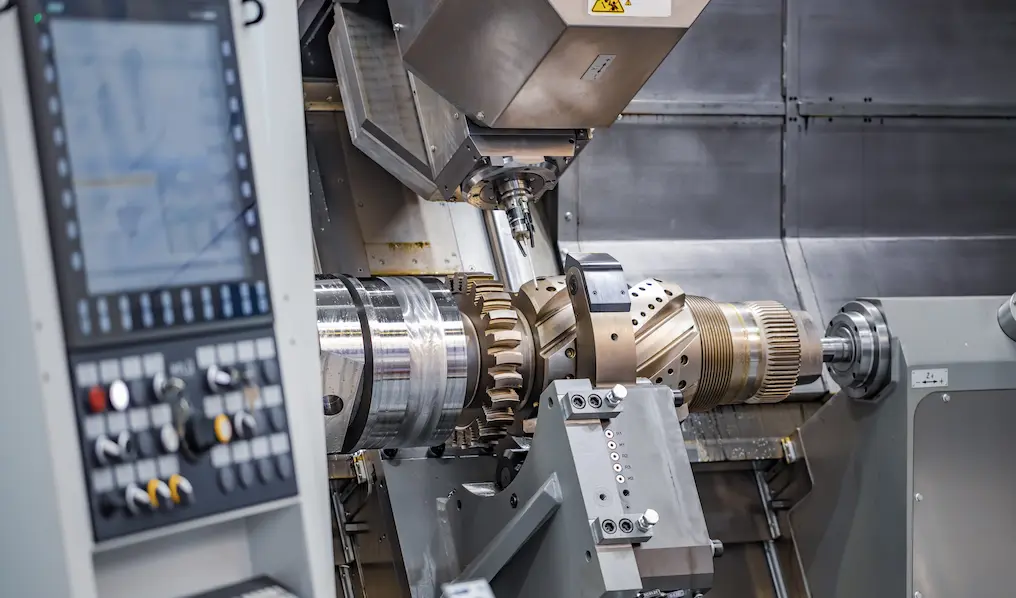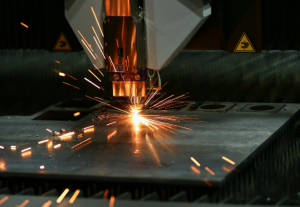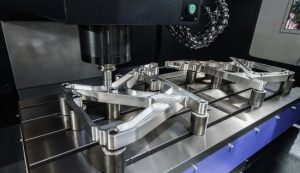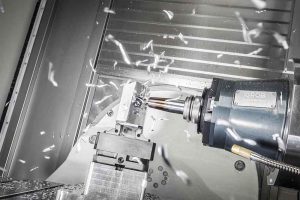Making money with a metal CNC machine is feasible, with startup costs around $5,000-$15,000 and monthly revenue up to $10,000. You can process 20 parts per hour, each selling for $30, with an annual growth rate of 6%.
Small Business Proposal
Tired of high rents and costs associated with physical stores? If so, you can’t miss the small business opportunity with metal CNC machines! Don’t worry, we’ll discuss how to leverage this “little giant” to make money.
A very notable difference is that you can start using metal CNC machines relatively cheaply. Basic models range in price from $5,000 to $15,000, depending on the brand and features. CNC machines are known for their extremely high machining precision—up to 0.001 inches in most cases! This high precision is especially popular in advanced manufacturing fields such as aerospace, automotive, and medical equipment functions. Additionally, you can operate online—taking orders and earning $100-200 in profit in just a few hours of machining time, excluding material costs.
A small company named XYZ started with just one basic CNC machine. They produce custom auto parts, making 200 parts per month, each priced at $50. By calculation, they can bring in $10,000 a month in revenue (this is a baseline number!). These startups are more confident in the future production capacity of CNC machining because the industry has an annual growth rate of 6%.
Operational costs need to be considered, aside from the initial equipment investment. Electricity (most of your investment in CNC machines will go here; typical ranges are between 7.5kW to over 20kW) is estimated at $0.10 to $0.20 per kWh, resulting in monthly electricity costs of $200 to $400, depending on your location. The monthly operating cost, including tool wear and coolant costs, should not exceed $500! Compared to rent and labor expenses, this is a drop in the bucket!
Learning to operate a CNC machine is easy. You can consult many vocational schools for information on this, or even attend related training courses for free. You can learn the basic operation and programming skills within a few months. Apart from all the prospects in this industry, it does not require a high degree of education; the only prerequisites are your strong practical skills and passion, and almost anyone can master it. As a famous entrepreneur said, “Opportunity is always for those who are prepared,” more than 90% of CNC machine operators can fully master their jobs within six months.
Let’s look at market demand; CNC machined products are used in different industries and are particularly sought after in custom and small-batch production. This further expands the market and potential. According to research, by the end of fiscal 2027, the global CNC machine tool market is expected to reach $15 billion. China’s CNC machine tool market is rapidly advancing on a large scale (with an annual growth rate of 8.2% from 2016-2027).

Mass Production of Popular Parts
Next, we focus on the mass production of popular parts—another way to earn high profits using metal CNC machines. That’s right, CNC machines are not only used for single-piece production but are also suitable for mass production.
Let’s see which components are scarce. In the automotive industry, special parts such as brake discs, engine parts, or gears must be produced. The global auto parts market grew to $410 billion in 2023, with an annual demand for brake discs alone exceeding 50 million units. Utilizing CNC machines for mass production, the appeal of these parts is the potential for substantial profits. Each CNC machine can process 20 standard automotive parts per hour, theoretically generating $600 per hour (20 parts x $30 each).
Besides the automotive industry, the electronics field also requires many parts. There is strong demand for thermal solutions for phone cases, heat sinks, and connectors. Phone cases are a great example: over 1.5 billion phones are produced globally each year, each requiring at least one case… and they are all made of plastic! Producing 50 to 100 phone cases per hour, each priced at $5 to $10, means an hourly income or profit of $250 to $1,000.
Some may ask, is the cost of mass production high? In fact, due to their cost control, profits remain quite significant. Electricity and tool wear are the two major operational costs of CNC machines. As previously mentioned, electricity costs about $0.10 to $0.20 per hour, and tool wear/coolant costs add up to $10 to $20 per hour. Generally, the hourly operating cost is less than $20. Compared to hourly revenue, this cost is negligible.
Efficiency issues. They work fast with short production cycles. A standard part is usually available in 3 to 10 minutes. Assuming you have 10 CNC machines producing 20 parts per hour and running 10 hours a day, the daily output is around 200 parts. Thus, with 2000 parts per day, priced at $30 each, the daily revenue could be as high as $60,000. This is a conservative estimate; particularly expensive parts have higher prices, meaning you can earn more profits.
Apart from cost and efficiency, another notable advantage of mass production is that it continues to play a role in the sustained explosive growth in market demand. According to international market research reports from 2019, the annual growth rate of flash parts worldwide will reach about 7.5% in the next five years. This is a good sign for many markets. From a broad market perspective, the potential product volume is quite considerable.
Accepting Outsourced Machining Orders
Another great way to profit from metal CNC machines is to accept outsourced machining orders—did you know? Thousands of companies need outsourcing services due to large orders and potential manpower shortages. This is where your CNC machines come in handy.
First, let’s look at some data. The global outsourcing services market grew to over $900 billion in 2022 (with manufacturing accounting for about 35%, or about $315 billion). This means there are a large number of orders waiting to be scanned. Even just a part of these orders can net tens of thousands or hundreds of thousands of dollars annually.
You receive an outsourcing order where each part is machined for $20, and the average automotive part requires the total time of the original amount. This translates to $100,000 in monthly revenue. But what is the time and cost of machining these parts? A CNC machine can process about 10 parts per hour, running 8 hours a day, and complete the order in about 20 days. Considering electricity costs, tool wear, and coolant costs, about $10 per hour, the total cost is about $1,600. Monthly net income is $98,400, just from one order!
Next is outsourced orders from the electronics industry. Suppose you receive an order to machine 10,000 metal phone cases per month, each priced at $5. Monthly revenue is $50,000. Each case takes about 2 minutes to machine, and a CNC machine can process approximately 240 cases per day. Using 10 machines, you can produce up to 2400 cases per day, completing the entire order in 5 days. In turn, your average wage is about $675, with the same cost calculation resulting in a total monthly payment of about $2,000, leaving nearly $48,000 in net income for the month.
The medical device industry also requires high levels of outsourced machining work, in addition to automotive parts and electronics. The global medical device market was estimated at around $500 billion in 2022, with nearly $100 billion outsourced. CNC machines can provide the perfect precision and quality needed for machining medical device parts. Suppose you receive an order for 2,000 medical device parts per month, each priced at $50. Monthly revenue is $100,000. Each part takes about 10 minutes to machine, and a CNC machine can produce about 48 parts per day. You can produce 240 parts per day with five machines, completing the order in 8.3 days. Monthly maintenance costs are $4,000, bringing the total monthly net income to $96,000.
Why do companies choose to outsource machining? First, outsourcing helps companies save on variable costs because nearshore development companies do not conduct any procurement or need to hire specialized employees. The second method saves production time, allowing companies to focus on their core business while entrusting machining tasks to experts like you. Outsourcing can save companies 20%-30% of operating costs.
Someone once said, “Opportunities are always there, so seize every opportunity!” Another opportunity is accepting outsourced machining orders. As orders increase, you can not only make a lot of money from machining fees but also expand your business through customer networks. Over 70% of successful small and medium-sized enterprises start from external orders.
Moreover, the continuous growth in market demand continues to provide more opportunities. The global outsourcing machining market will grow at a compound annual growth rate of 5.2% over the next five years. So, as long as you seize the opportunity, the number and value of orders will continue to grow







